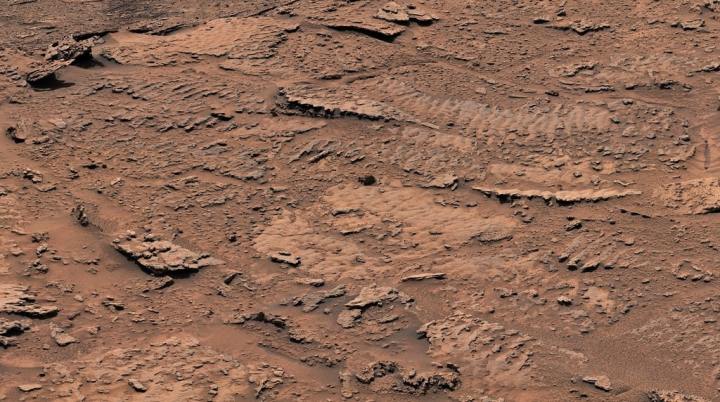The key to understanding whether Mars was ever habitable is water. For life as we know it to thrive, liquid water needs to be present — and we know that even though it is now dry, there was once liquid water on the surface of Mars. However, the history of water on Mars is complex, and scientists are still debating exactly how long water was present there and when the planet dried up.
And it’s about to get more complex. Recently, the Curiosity rover has made an intriguing discovery suggesting that water was once present in an area that scientists had thought would be dry.

Curiosity captured the image above in December 2022 in a region called the Marker Band Valley. The ripple-like textures were created by actual ripples in a lake, billions of years ago, which stirred up sediment on the lake bed into these forms.
The unusual thing about this discovery is its location — the rover is currently climbing up a mountain called Mount Sharp, where the oldest layers of rock are at the bottom and younger layers are at the top. At the point the rover is currently located, around half a mile from the mountain’s base, the researchers expect to find drier conditions — but instead, they found this evidence that there was once a shallow lake here.
“This is the best evidence of water and waves that we’ve seen in the entire mission,” said Ashwin Vasavada, Curiosity’s project scientist at NASA’s Jet Propulsion Laboratory, in a statement. “We climbed through thousands of feet of lake deposits and never saw evidence like this – and now we found it in a place we expected to be dry.”
As well as these ripples, there’s another rock feature in the area that has the team excited. There are rhythmic rock layers that have a repetitive pattern, suggesting that they were caused by regular cycles of the climate or weather such as dust storms. That means that the history of water in the region might have been complicated further.
“The wave ripples, debris flows, and rhythmic layers all tell us that the story of wet-to-dry on Mars wasn’t simple,” Vasavada said. “Mars’ ancient climate had a wonderful complexity to it, much like Earth’s.”



